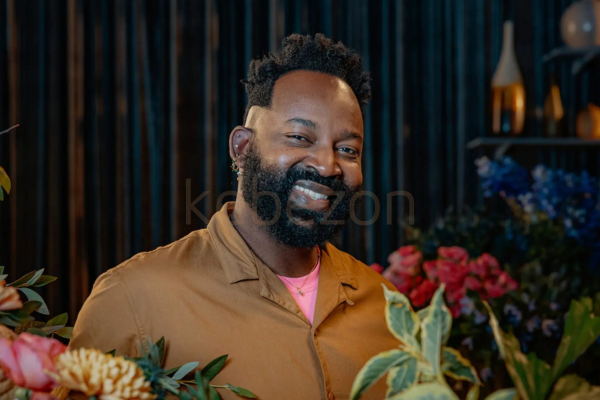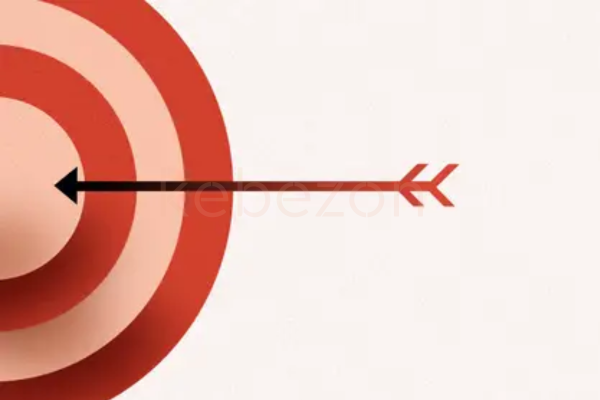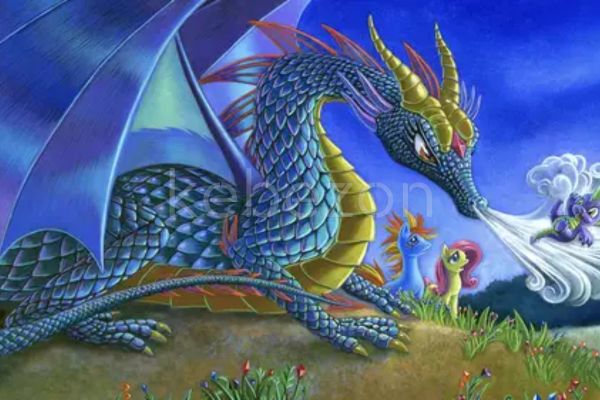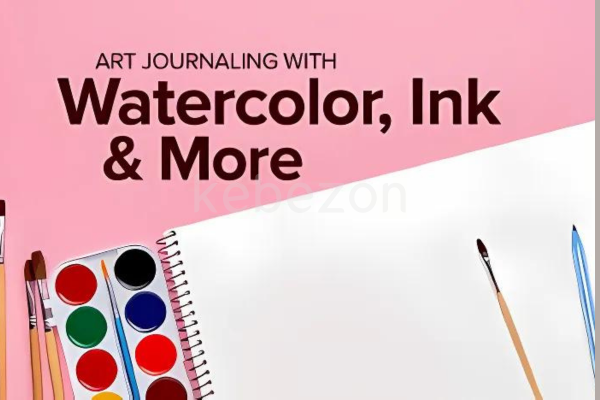Design Stunning Floral Arrangements with Maurice Harris
6,00 $
You may check content proof of “Design Stunning Floral Arrangements with Maurice Harris” below:
Design Stunning Floral Arrangements with Maurice Harris
Floral arrangements often evoke emotions, add charm, and transform ordinary spaces into something extraordinary. Maurice Harris, an acclaimed floral designer and the creative force behind Bloom & Plume, harnesses the power of flowers through a unique blend of artistic vision and technical skill. His designs are lauded not only for their visual impact but also for the emotional connections they create. With extensive experience crafting stunning arrangements for high-profile clients like Beyoncé, Harris has become a prominent figure in the floral design world.
His MasterClass, “Designing Stunning Floral Arrangements,” offers an engaging insight into his innovative approach and is designed to help creatives worldwide discover their floral artistry. This article delves into the various aspects of floral design inspired by Harris’s methods. It explores foundational techniques, the interplay of color and texture, size and scale considerations, types of arrangements, as well as tools and a creative influence that define successful floral artistry.
Overview of Maurice Harris as a Floral Designer
Maurice Harris has emerged as a trailblazer in floral design, melding vibrant artistry with technical expertise. He draws comparisons to a maestro orchestrating a symphony; every flower is a note, every arrangement a composition of stunning beauty. His studio, Bloom & Plume, situated in Los Angeles, stands as a testament to his commitment to artistry. Distinctive for a signature “asymmetric symmetry,” Harris’s work embodies a sense of organized chaos that captivates viewers, leaving them enchanted and often emotional.
His background is equally compelling. Growing up in a multicultural environment, Harris’s designs echo his diverse experiences. Inspirations range from fashion, art, and nature, creating a rich tapestry of influences that manifest in each arrangement he crafts. No wonder he has collaborated with esteemed brands such as Gucci, where every petal becomes part of a larger narrative one that speaks to identity and community. Ultimately, he is not merely creating arrangements; he is telling stories through flowers.
Through his MasterClass, Harris commits to sharing his knowledge. The course allows participants to journey beyond basic techniques, exploring their creativity while engaging with his philosophies. Harris believes that floral design is an act of personal expression, encouraging everyone to find their unique voice and style. In that sense, he is less a teacher of flowers and more a facilitator of creative journeys, helping others unlock potential they didn’t know existed.
Key Techniques for Floral Arranging
Creating stunning floral arrangements requires a depth of understanding and an array of techniques, a treasure trove of knowledge that Maurice Harris generously shares. Like a painter choosing colors for their canvas, floral designers must carefully select flowers while also considering their arrangement. Here are the key techniques to achieve this:
- Choosing and Preparing Flowers: Selecting the right flowers is paramount. Harris teaches that just as a chef relies on fresh ingredients, designers benefit from quality blooms. Proper preparation, such as trimming stems and hydrating them before arrangement, enhances longevity and presentation.
- Understanding Color and Texture: The concept of color theory plays a significant role. Colors can evoke different emotions; using bold reds may ignite passion, while soft blues instill calm. In combination with various textures from fluffy peonies to sleek hydrangeas this creates depth within arrangements, allowing the eye to dance across the composition.
- Creating Balance and Dimension: Balance can be likened to the harmony in music. Whether symmetrical or asymmetrical, achieving balance in arrangements ensures they are visually appealing. Incorporating dimension through varying heights and sizes of flowers adds intrigue and engagement.
- Step-by-Step Guidance: Each lesson unwinds like a well-crafted story. Harris provides structured guidance on various arranging techniques students go from theory to hands-on practical assignments. This method not only nurtures skills but also boosts confidence.
- Expressing Personal Vision: Ultimately, Harris desires participants to connect deeply with their floral designs. He encourages deviation from traditional norms, exploring and personalizing flower arrangements into genuine expressions of artistry.
By integrating these techniques, participants in Harris’ MasterClass are equipped to elevate their floral design skills, unlocking the door to creative potential.
Color Theory in Floral Design
Color theory is a vital aspect of floral design that inspires emotions and narratives within arrangements. Understanding this paints a vibrant, dynamic unveiling of visual storytelling. Here are key considerations:
- Color Wheel Application: Just as an artist utilizes shades on a palette, florists use the color wheel to guide their selections. Primary, secondary, and tertiary colors harmonize to create vivid displays. For instance, pairing yellow daisies with purple accents evokes energy and joy.
- Emotional Impact of Colors: Every color carries emotional baggage. For example, white symbolizes purity, often seen in weddings, while purple can denote sophistication and creativity. Harris emphasizes this emotional resonance, using color as a tool to communicate deeper messages.
- Harmonious Color Palettes: A harmonious composition can be created by following color principles establishing a dominant shade and building around it with complementary or analogous hues. For instance, a blush pink bouquet may be accented with deeper burgundy.
- Accent Colors: Much like a spotlight on a stage, an accent color draws immediate attention within an arrangement. A splash of vibrant orange among muted tones can create a stunning focal point, making the entire design more compelling.
- Experimentation: Harris encourages experimentation in color combinations. Often, stepping outside traditional color boundaries can lead to unexpected, delightful results. This willingness to play with colors encourages creativity and self-expression.
By mastering color theory principles, aspiring designers can orchestrate stunning floral arrangements that communicate specific emotions and capture the viewer’s eye, creating a powerful visual impact.
Textural Elements in Arrangements
Textural elements breathe life into floral arrangements, adding complexity and intrigue. Like an orchestra comprising various instruments, the elements of texture combine to create a symphony of visual delight. Here are key techniques:
- Layering: Successful arrangements often stem from diverse floral types layering soft bloom textures with rugged foliage creates a multidimensional look. Imagine the softness of roses paired with the linear sharpness of eucalyptus; the contrast is both striking and beautiful.
- Mixing Materials: Harris often urges creativity by introducing non-floral elements into arrangements. Items like branches, berries, or even stones can offer unique textural contrasts, allowing designs to communicate more than just a floral message.
- Foliage Variety: Selection of foliage can significantly influence the textural quality of arrangements. Lush, broad leaves may soften the overall vibe, while sharp, spiky foliage can instill energy and tension in the composition.
- Balancing Textures: The harmony between varying textures is essential; too much of one type can create chaos. By thoughtfully pairing bold textures with softer choices, designers can achieve a cohesive and visually pleasing aesthetic.
- Incorporating Unique Elements: Creativity in textural design can surface through unexpected elements such as fruits, grasses, or dried materials. This variety can yield intricate designs think of a rustic farmhouse arrangement featuring herbs, wildflowers, and seasonal fruits.
Through these techniques, floral designers can create sophisticated arrangements that engage viewers on multiple sensory levels, inviting curiosity and appreciation.
Dimension and Scale in Floral Design
Understanding dimension and scale is crucial for crafting captivating floral arrangements. Dimension refers to physical and visual aspects of the arrangement, while scale concerns the size relationship between elements. Here’s how these concepts unfold:
- Dimension:
- Physical Dimension: When designing arrangements, consider not just height but also width and depth. A successful arrangement will vary in height, combining tall elements like snapdragils with lower blooms, shaping a three-dimensional experience that draws the viewer’s eye.
- Visual Dimension: This encompasses how height, layering, and depth influence perception. Layering flowers and foliage creates a visual journey, allowing the eye to traverse the arrangement, appreciating each element along the way.
- Scale:
- Proportions of arrangements should align with their surroundings. A small bouquet can get lost on a grand dining table, much like a whisper in a loud room. Avoid overwhelming small spaces with oversized designs; rather, aim for pieces that are 1.5 to two times the height of the container for effective balance.
- Focal Point: Establishing a central focus captures interest a large or uniquely colored flower can serve as that centerpiece. This point serves as an anchor from which other elements emanate.
- Balance and Proportion: Embrace different forms of balance in arrangements. Symmetrical compositions can convey formality, while asymmetrical ones suggest dynamism and energy, guiding the eye in exciting directions.
- Rhythm and Movement: Infusing rhythm helps guide the viewer’s gaze. Strategically placing elements to lead the eye around the arrangement can amplify engagement and evoke a sense of movement.
By mastering dimension and scale, floral designers can craft impactful arrangements that resonate in both aesthetic and emotional contexts, drawing viewers in with their captivating beauty.
Types of Floral Arrangements
Floral arrangements come in various forms, each reflecting different styles and purposes. Understanding these types can enhance a designer’s versatility and creativity. Here’s an overview of common types of floral arrangements:
- Bouquets: These can vary from lush hand-tied designs to structured cascading styles. A focal flower forms the centerpiece, surrounded by complementary blooms. Bouquets are often marking of celebrations birthdays, weddings, or even a thoughtful gift.
- Centerpieces: These arrangements anchor table décor. They are important for events like weddings and corporate gatherings where they occupy prime real estate in the guests’ line of sight. Varying heights and textures enhance interest, creating visual drama.
- Corsages and Boutonnieres: These are smaller floral accessories worn on clothing. Detail and craftsmanship are important, as the floral design needs to be both durable and aesthetically pleasing, requiring meticulous wiring and taping.
- Wreaths: Circular and typically seasonally themed, wreaths can also serve as decorative pieces for doors or tables. Their form embodies continuity and eternity, making them a popular choice for seasonal or commemorative events.
- Arrangements for Specific Themes: Seasonal or culturally inspired designs think autumn arrangements with rich oranges and browns enable floral artists to tell deeper stories through color and texture.
By recognizing and mastering various types of floral arrangements, designers can elevate their creativity while producing pieces that resonate with their audiences’ needs and preferences.
Single-Stem Floral Arrangements
Single-stem floral arrangements often emphasize simplicity and elegance. Maurice Harris adeptly highlights this style in his teachings, making the solitary flower the star of the show. Utilizing the distinct characteristics of each bloom allows designers to create memorable focal points.
In constructing single-stem arrangements, the selection of high-quality flowers becomes paramount. The process begins with choosing a flower that offers a unique form, vivid color, or captivating fragrance. Roses, calla lilies, and unique tropical blooms create striking singular statements.
Placement is equally important in these arrangements. Harris encourages designers to experiment with various heights, utilizing pedestal vases or unique holders that elevate the flower. This not only enhances visibility but also adds an artistic touch to the composition.
In essence, single-stem arrangements illustrate how modest design principles often yield stunning results. Each flower becomes a narrative of its own telling stories through its color, form, and context. These arrangements can evoke various feelings, from nostalgia to celebration, while remaining a celebrated choice for simple elegance.
Seasonal Floral Designs
Seasonal floral designs infuse arrangements with the beauty and vitality of nature, celebrating the unique blooms available at different times of the year. Maurice Harris skillfully integrates this concept into his teachings, encouraging students to explore the changing palette of nature.
Each season presents its charm; thus, seasonal arrangements are versatile and allow for vast creativity. Spring may showcase tulips, daffodils, and lilacs, fostering a sense of renewal and hope. By contrast, autumn arrangements often highlight rich hues with sunflowers, chrysanthemums, and vibrant foliage that reflect the turning leaves.
In crafting these arrangements, Harris guides designers in selecting flowers that harmonize with the season’s theme. Local blooms add freshness and authenticity, allowing florists to strengthen community connections through their work.
The impact of seasonal designs extends beyond mere visuals. By integrating seasonal flowers, arrangements resonate on emotional and cultural levels bringing warmth and familiarity as they reflect the changing cycles of life. This practice emphasizes the natural beauty that surrounds us and showcases the artistry that blossoms from it.
Custom Showstopper Arrangements
Custom showstopper arrangements are the crown jewels of floral design, combining creativity with artistry to create impactful pieces that captivate attention. Maurice Harris excels in crafting these showpieces, telling a story through elaborate and thoughtfully composed floral designs.
Showstopper arrangements often include a diverse mixture of flowers, contrasting colors, and textural elements that demand attention. Using flowers like peonies, orchids, and hydrangeas alongside unique foliage options can create striking visual interest. Harris emphasizes the importance of layering these elements, adding depth to the design that draws the eye around the arrangement.
To create a successful showstopper, it’s essential to establish a focal point. A larger bloom can serve as the centerpiece, allowing other flowers to neatly cascade around it. Design simplicity informs overall harmony while bold and vibrant arrangements are often featured, balance can be achieved using complementary elements.
The final touch in a custom showstopper is executing creative flair adding unexpected elements like decorative branches, fruits, or twigs can elevate an arrangement’s uniqueness. Ultimately, these designs become conversation starters, emanating sophistication while effectively serving as focal points during events or in interiors.
Tools and Materials for Floral Arranging
To create stunning floral arrangements, the right tools and materials are essential. Maurice Harris introduces beginners to the must-haves for crafting exceptional floral designs. Below is a list of essential tools and materials that streamline the design process.
Essential Tools for Beginners
- Floral Snips or Scissors: A pair of floral snips ensures clean cuts, promoting longer vase life by optimizing water absorption.
- Floral Tape: This tape helps create grids in vases, providing structural support for the arrangement.
- Containers: Various shapes and sizes of vases allow for experimentation in design. Starting with simple containers can build a strong foundational skill set.
- Floral Wire: Useful for securing delicate stems or attaching flowers together, floral wire is versatile in the arranging process.
- Spray Bottle: A bottle for misting flowers keeps them hydrated during the arranging session.
- Thorn Stripper: Efficiently removes thorns from stems, creating safer and more aesthetically pleasing designs.
Recommended Flowers and Foliage
When starting out, choosing the right flowers and foliage makes all the difference. The following are some excellent options for beginners:
- Foliage:
- Italian Ruskus: Provides structure and shape.
- Varieties of Ferns: Add a lush backdrop and texture to arrangements.
- Filler Flowers:
- Snapdragons: Work beautifully for height and interest.
- Veronica: Offers a flowy softness, complementing solid blooms.
- Focal Flowers:
- Dahlias: With their bold aesthetics, these large flowers command attention.
- Roses: An accessible classic that brings scent and variety.
Integrating these materials fosters a supportive environment for creativity while allowing the user to build beautiful floral arrangements from the ground up.
Step-by-Step Floral Arrangement Process
Creating floral arrangements is an approachable and enjoyable endeavor. The process can be broken down into manageable steps tailored to produce stunning results, a method reinforced by Maurice Harris’s teachings.
- Gather Your Materials: Collect flowers, tools, and the chosen vase. A diverse selection of blooms encourages creativity.
- Snipping Stems: Using sharp clippers, trim stems diagonally to promote water absorption. An inch from the base is ideal.
- Stripping Leaves: Remove any leaves that will be submerged in water, as they can promote bacterial growth and diminish the arrangement’s longevity.
- Creating a Base with Greenery: Start by placing greenery in the vase to create a foundational shape.
- Arranging Focal Flowers: Position the largest, most vibrant flowers evenly around the vase, ensuring visual balance.
- Adding Secondary Flowers: Fill gaps between focal flowers with smaller blooms, building a cohesive design.
- Incorporating Detail Flowers: Use smaller details like accent flowers to introduce texture and interest. This adds depth to the arrangement.
- Using Textures and Additional Elements: Mix in unique touch elements, providing contrast without overwhelming the design.
- Hydration and Maintenance: After arrangement, maintain hydration by changing the water regularly and trimming stems as necessary.
By following these steps, aspiring floral designers can create beautiful arrangements inspired by their personal creativity, while also implementing the technical insights shared by Maurice Harris in his MasterClass.
Creative Influence and Personal Style Development
Developing a personal style in floral design is intrinsically tied to creative influences, as Maurice Harris uniquely illustrates in his approach. This section explores the creative journey that shapes designers and their relationships with flowers.
Exploring Your Unique Floral Aesthetic
Harris encourages designers to cultivate their unique floral aesthetic, a reflection of personal experiences and artistic vision. Central to this journey is the influence of cultural narratives, personal memories, and surrounding environments. Each arrangement serves not only to please the eye but also to connect with the designer on a deeper emotional level.
Understanding one’s influences can lead to fashioning a signature style. Harris draws inspiration from everyday life, European fashion, and cross-cultural themes, enabling floral designs to encapsulate genuine artistry. Subtle nods to personal history add meaning to each composition be it through color, texture, or form.
Moreover, this exploration fosters emotional bonds, inviting designers to engage clients and always keep community narratives as part of their floral stories. Encouragement comes from trial and error, and the journey is vital as designers discover their unique pathways through floral artistry.
Curation of Inspiration for Floral Designs
Curation of inspiration transforms raw creative impulses into tangible, impactful floral designs. This process involves pulling influences from various sources nature, architecture, art, and personal experiences informing each creation. For Maurice Harris, this becomes a crucial step in shaping impressive arrangements.
- Nature: Outdoor explorations alongside the changing seasons illuminate patterns and palettes that directly inspire bouquet designs. Observing a sunset can influence a palette of warm oranges and soft purples.
- Art and Architecture: Cultural experiences often reveal combinations of color, lines, and shapes that can translate into floral designs. An ornate sculpture may inspire intricate layering and symmetry in an arrangement.
- Personal Experiences: Memories shape narratives; reflecting on significant life moments can indicate floral choices, leading to themes that evoke feelings of nostalgia.
- Imagery and Moodboards: Compiling mood boards that collect imagery holidays, nature scenes, or art pieces enables designers to create a visual roadmap, enhancing creativity and cohesion in their arrangements.
By curating inspiration, floral designers can translate their thoughts and feelings into stunning compositions that resonate deeper, fostering connections with audiences and imbibing unique narratives into every arrangement.
Reviewing Maurice Harris’s Floral Design Classes
Maurice Harris’s floral design classes unfold like a vibrant storybook. Commencing with the background of floral artistry, he shares his own journey, challenges, and triumphs in learning, inspiring students to embark on their own paths. The comprehensive curriculum enhances participants’ skills while nurturing personal expression.
Course Structure and Learning Outcomes
The MasterClass spans 30 days, engaging participants in interactive lessons. This structured approach benefits learners as they absorb concepts essential for successful floral arranging:
- Introductory Insights: Harris’s own narrative his successes, failures, and lessons encourages personal growth while contextualizing the learning journey.
- Hands-On Projects: The course culminates in creating five unique floral designs, allowing students to apply hands-on learning to develop artistry and technical precision.
- Techniques and Styles: Harris covers principles such as color blending, texture management, and his signature “asymmetric symmetry,” all vital in crafting dynamic arrangements.
- Creative Expression: Students are urged to explore and define their design style, promoting the use of flowers as a medium for self-expression.
- Community Engagement: Fostering interactions among students, sharing experiences, and providing feedback enhances the overall learning process, creating a supportive network.
Upon completion, participants emerge with:
- Mastery over essential design techniques and principles.
- The ability to craft diverse arrangements catering to several occasions.
- Confidence in using flowers to convey personal vision and narrative.
By mastering these elements, learners gain tools for artistic exploration and expression in floral design.
Engagement and Community Feedback
The engagement surrounding Maurice Harris’s floral design classes shines brightly within his community. Participants often share their experiences with a resounding positivity, highlighting the effectiveness of his personalized approach.
Community feedback indicates that the step-by-step guidance provided enhances learning outcomes. Students embrace the supportive environment that encourages sharing creations and receiving constructive input. With a vibrant online community, participants feel connected and inspired, fostering camaraderie among aspiring floral designers.
By sharing unique perspectives and creative inspirations, the environment becomes collaborative, emphasizing a love for the art of floristry. As students reflect on their journeys and celebrate their growth, they find confidence in their designs, bolstering their connection to floral artistry.
Impact of Floral Arrangements on Events and Spaces
Floral arrangements play a transformative role in redefining environments and elevating events. They act as visual anchors, contributing to the overall atmosphere and guest experience. Here’s how floral design impacts events and spaces, along with seasonal ideas.
Transforming Environments with Floral Design
Floral arrangements serve as aesthetic focal points capable of transforming event spaces. Consider this concept as akin to a powerful storytelling element a well-chosen arrangement breathes life into a venue, echoing themes and enhancing overall ambiance.
Through mood and ambiance, flowers can set the tone for occasions. For instance, a romantic wedding accentuated with soft pastel arrangements envelops guests in love and warmth. Conversely, elegant arrangements featuring deep hues create a sophisticated atmosphere for corporate events.
The visual impact of floral displays can be likened to lighting essential in creating mood and inviting engagement. Additionally, flowers serve to fill voids in larger spaces, crafting a warm, inviting environment. Achieving harmony in design encourages attendees to immerse themselves fully in the occasion.
Seasonal and Thematic Arrangement Ideas
Embracing seasonal and thematic floral arrangements fosters a deep connection with nature and culture. Using seasonal blooms ensures designs resonate and evoke feelings relevant to the time of the year. Here are some ideas:
- Spring Arrangements: Characterized by vibrant colors, designers can utilize tulips, daffodils, and hyacinths, inspiring feelings of renewal.
- Summer Arrangements: Bold and bright colors reign, with sunflowers, zinnias, and dahlias conjuring feelings of warmth and celebration.
- Autumn Arrangements: Rich earth tones are the stars here flowers like chrysanthemums and seasonal foliage provide texture, creating inviting displays.
- Winter Arrangements: Cool hues and pines characterize these arrangements, utilizing evergreen branches, holly berries, and delicate white blooms that evoke festive joy.
With creative incorporation, floral designs resonate deeply within their environments, fostering meaningful connections between the decor and the occasion’s emotional core.
Conclusion: Mastering Floral Design with Maurice Harris
Maurice Harris’s approach to floral design offers aspiring florists an opportunity to master this art form while embracing their creative potential. By engaging with both technical skills and personal expression, participants in his MasterClass gain valuable insights into the world of floral artistry. Each arrangement becomes a means of storytelling and emotional connection, celebrating the beauty of nature and human creativity. Through Harris’s guidance, individuals not only learn to create stunning floral arrangements but also tap into their unique narratives, ensuring that every design speaks with a voice of its own.

Frequently Asked Questions:
Business Model Innovation:
Embrace the concept of a legitimate business! Our strategy revolves around organizing group buys where participants collectively share the costs. The pooled funds are used to purchase popular courses, which we then offer to individuals with limited financial resources. While the authors of these courses might have concerns, our clients appreciate the affordability and accessibility we provide.
The Legal Landscape:
The legality of our activities is a gray area. Although we don’t have explicit permission from the course authors to resell the material, there’s a technical nuance involved. The course authors did not outline specific restrictions on resale when the courses were purchased. This legal nuance presents both an opportunity for us and a benefit for those seeking affordable access.
Quality Assurance: Addressing the Core Issue
When it comes to quality, purchasing a course directly from the sale page ensures that all materials and resources are identical to those obtained through traditional channels.
However, we set ourselves apart by offering more than just personal research and resale. It’s important to understand that we are not the official providers of these courses, which means that certain premium services are not included in our offering:
- There are no scheduled coaching calls or sessions with the author.
- Access to the author’s private Facebook group or web portal is not available.
- Membership in the author’s private forum is not included.
- There is no direct email support from the author or their team.
We operate independently with the aim of making courses more affordable by excluding the additional services offered through official channels. We greatly appreciate your understanding of our unique approach.
Be the first to review “Design Stunning Floral Arrangements with Maurice Harris” Cancel reply
You must be logged in to post a review.
Related products
Arts & Entertainment
Arts & Entertainment
Arts & Entertainment
Arts & Entertainment
Arts & Entertainment
Arts & Entertainment
Arts & Entertainment
Art Journaling With Watercolor, Ink & More with Judith Cassel-Mamet
Arts & Entertainment
Beverage CGI Workflow in C4D & Photoshop with Dustin Valkema











Reviews
There are no reviews yet.